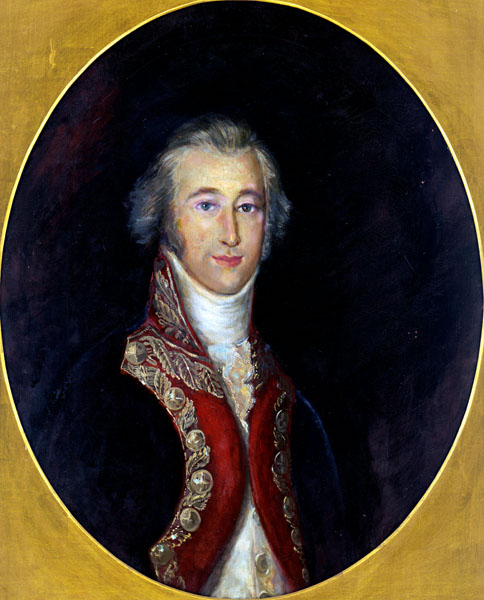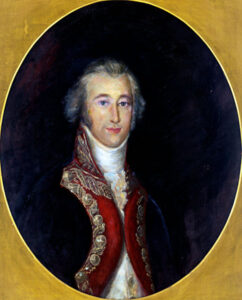Alejandro O’Reilly
Alejandro O’Reilly served as the second Spanish governor of Louisiana from 1769 to 1770.
This entry is 6th Grade level View Full Entry

LOUISIANA STATE MUSEUM
A portrait of Alejandro O'Reilly by Aurora Lazcano.
Alejandro O’Reilly served as the second Spanish governor of Louisiana from 1769 to 1770. While governor, he strengthened Spanish control of the colony and reformed its government, laws, and economy. One of his first actions as governor was to punish the ringleaders of the Insurrection of 1768, who had resisted the colony’s transfer from France to Spain. Because of the executions that O’Reilly ordered, he became known in Louisiana as “Bloody O’Reilly.”
What was O’Reilly’s early life and career like?
O’Reilly was born to an upper-class Irish family in 1722. During this time many Irish people left their homeland to serve as hired soldiers for Catholic rulers in continental Europe. Following his father’s lead, O’Reilly joined the Spanish infantry at the age of ten. He fought for Spain in Italy, and during the Seven Years’ War, he served as an officer in the Austrian, French, and Spanish armies. He successfully led the Spanish invasion of Portugal, England’s ally in the war, which won him a promotion from Spain’s King Charles III. When England gave up its control of Cuba in the 1763 Treaty of Paris that ended the war, King Charles III sent O’Reilly to retake Havana and figure out how to make Cuba profitable again. O’Reilly performed similar services in Puerto Rico and then returned to Cuba, where he married Rosa de Las Casas. Recalled to Spain in 1764, O’Reilly founded an officer training academy. He continued to demonstrate his talents in 1766 when, as military governor of Madrid, he defended the king’s palace from citizens rioting over the high price of grain.
What did O’Reilly achieve as governor of Louisiana?
France had ceded Louisiana to Spain in the 1762 Treaty of Fontainebleau, but the French and Creole colonists did not willingly accept the new Spanish regime. In 1768 a crowd of New Orleanians dissatisfied with Spanish rule rebelled and forced Governor Antonio de Ulloa out of Louisiana. King Charles III sent General O’Reilly to Havana to gather enough troops to restore order, and in July 1769 twenty ships arrived in Louisiana carrying an army of two thousand men to reestablish Spanish control.
Within days of taking charge in New Orleans, O’Reilly ordered thirteen of the men who had overthrown Ulloa and forced him out of the colony taken prisoner; one died resisting arrest, and one French official was eventually sent back to France. The insurrection’s leaders were convicted of sedition and treason. Six of the men were sentenced to prison in Cuba, and the other five were executed by firing squad the following day. Nearly forty years later, a street was built at the site where the rebels were shot. Named “rue des François” in their honor, it is still called Frenchmen Street today. O’Reilly issued a general pardon for the rest of the people who had taken part in the uprising, as long as they agreed to swear devotion to Charles III.
O’Reilly made many useful reforms in Louisiana during his six months as governor. By the time he returned to Cuba in March 1770, he had established a cabildo, the Spanish model for colonial governments, and issued the “Code O’Reilly,” aligning Louisiana’s laws with those of Spain. Among his reforms was limiting the number of drinking establishments in New Orleans, which had a reputation for its many rowdy taverns. By proclamation of October 8, 1769, O’Reilly allowed only twelve taverns, six billiard halls, and one limonadier (lemonade vendor) to serve alcoholic beverages. The regulation prohibited criminals from frequenting these establishments, and it outlawed the use of swear words and blasphemy.
O’Reilly worked to improve relations with Native American tribes and reorganized the colony’s defenses. He also helped stabilize the colony’s finances, establishing price controls on critical food items, raising standards for medical care, and restricting trade to Spanish ships and Spanish ports.
As a reward for O’Reilly’s many services, Charles III made him a count in 1772 and gave him an annual pension. In 1775 O’Reilly led an unsuccessful invasion of the North African port city of Algiers. Despite his failure he was given the governorship of Cadiz, Spain, in 1780. He resigned the post eight years later, retired to Valencia, and died in 1794.
